Why Canada’s prairies are the world’s most endangered ecosystem
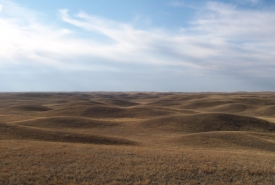
Rolling prairie at Old Man on His Back Prairie and Heritage Conservation Area, SK (Photo by Branimir Gjetvaj)
Updated November 7, 2018
Ask any Canadian kid to name the world’s most endangered ecosystem, and chances are you’ll hear one of the following answers: 1) rainforests; 2) coral reefs; 3) leave me alone.
Ignoring the last answer, there’s a good reason why kids, and most other people, think that rainforests and coral reefs are the most endangered ecosystems; the planet’s most critical and urgent habitats in need of conservation. Tropical rainforests and coral reefs are incredibly important for protecting the planet’s biodiversity. They are a cornucopia of millions of species and display the incredible and beautiful forces of life that create diversity. We are continuing to lose tropical rainforests, and coral reefs are at increasing risk from pollution, rising water temperatures and ocean acidification (the latter two a consequence of climate change). There is no question that both of these are endangered.

Coral reef (Photo by Jim Maragos/U.S. Fish and Wildlife Service)
These two ecosystems are also the focus of international campaigns to protect “hotspots” of species diversity. I was brought up in an era when every hamburger was blamed for the clearing of Brazil’s rainforests. Many of the world’s biodiversity hotspots are within tropical rainforests and coral reefs, and they are the focus of education and awareness campaigns shown on Canadian news and taught in Canadian classrooms.
Now, what if I told you the world’s most endangered ecosystem isn’t tropical rainforests or coral reefs? It’s a different habitat. And one that is much closer to home than you might think.
Recent studies have found that the Great Plains of the U.S. and Canada have lost a greater proportion of intact grassland than the Brazilian Amazon has lost rainforest.
The world's most endangered ecosystem
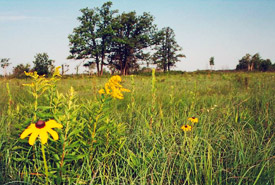
Prairie grassland, Manitoba (Photo by NCC)
Endangerment comes down to risk — the risk of losing a species, habitat or ecosystem for future generations. When we look at the risk factors for endangerment — past loss, current amount of conservation, potential for future loss — the winners (actually the losers) are temperate grasslands, including the good old Great Plains of Oh Canada that stretch across southern Manitoba, Saskatchewan and Alberta, and the grasslands of BC’s interior.
The world’s most endangered ecosystem is right here at home.
Globally, temperate grasslands cover about eight per cent of the Earth’s land surface. They generally exist in the interior of continents, where there is not enough rain and snowfall to support forests.
There are many reasons why temperate grasslands are endangered. They are the original breadbasket of the world. Over 50 per cent have been converted to crops and other land uses. Much of the remaining are intensively grazed, replacing what were some of the planet’s greatest concentrations of wild grazing animals with cattle, goats and sheep.
Around the world, temperate grasslands are faced with continuing habitat loss, fragmentation and desertification, impacting both biodiversity and local people that rely on healthy grasslands for their livelihood.
The loss and continued threats to temperate grasslands was recognized in 2008, when the International Union for the Conservation of Nature declared temperate grasslands as the world’s most endangered ecosystem. Two years later, a paper published in the Journal of Ecological Letters about global habitat loss and conservation found that temperate grasslands had the highest Conservation Risk Index compared to all other terrestrial ecosystems. This high risk is a result of large-scale conversion of temperate grasslands and very few protected areas. A recent paper in the journal Science examined habitat types around the world, and temperate grassland were identified as the ecosystem with the greatest impacts and land use pressures.
A picture of decline
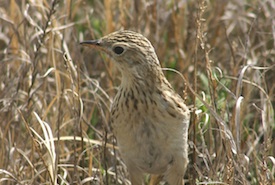
Sprague's pipit, Shoe Lake West, SK (Photo by Stephen Davis)
In many ways, the fate of Canada’s temperate grasslands mirrors the fate and state of this ecosystem around the world. More than 70 per cent of Canada’s prairie grasslands has been converted. A 2010 report on the status and trends of Canada’s major habitat types found that our grasslands are the only major ecosystem type in our country that is impaired, and continuing to decline.
The endangerment of grassland habitat in Canada has cascaded into the endangerment of many grassland species. More than 60 Canadian species at risk depend on this habitat, including species that symbolize our grasslands, such as plains bison, swift fox and greater sage grouse. Just this year, a report on the State of North America’s Birds concluded that many grassland birds are rapidly declining, and some species have lost over 70 per cent of their population in the last 40 years. The songs of birds such as Baird’s sparrow, Sprague’s pipit and chestnut-collared longspur are slowly dimming on our prairies.
We need grasslands, and grasslands need our help
The loss of Canada’s grasslands is a loss for Canadians. In addition to wide-open prairies, our grasslands also contain wetlands, lakes, rivers and valleys. Canada’s grasslands support fishes, waterfowl and breath-taking avian migration spectacles as millions of birds stop to rest and feed during their migration to the boreal and Arctic.
In an ecosystem that is created by a lack of water, grasslands are critical for allowing water to infiltrate into the ground, providing base flow to rivers and streams, and holding water during floods. Grassland are important for carbon storage, with intact native prairies proving to be particularly effective at sequestration and long-term storage in their deep and extensive root networks.
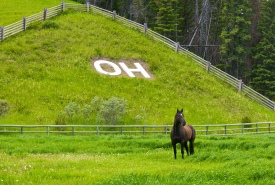
OH Ranch, AB (Photo by Karol Dabbs)
Grasslands can also showcase how people and nature can coexist. Many of Canada’s grasslands have a long history of sustainable cattle grazing. This grazing has supported generations of prairie ranchers, can help to maintain grassland health and benefits many species of prairie wildlife.
The loss of Canada’s prairies is also a loss for the world. Among the last places on Earth to shelter grasslands at a meaningful scale are the grasslands of North America’s Great Plains, and despite a loss of 70 per cent, Canada has some of largest and best sites remaining. A global assessment of critical places to conserve temperate grasslands identifies Canada’s prairies as a priority.
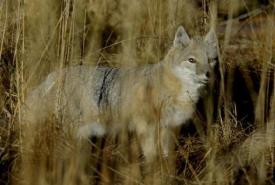
Swift fox (Photo by Karol Dabbs)
From early efforts to protect the last wild plains bison that roamed the prairies, to the establishment of “regeneration” national parks1, to protect dwindling populations of pronghorn antelope, to the return of the swift fox to its native habitat in 1983, Canadians have shown a passion and ability to conserve and restore our grassland heritage.
Conservation is a community effort
The Nature Conservancy of Canada has protected more than 197,684 acres (80,000 hectares) of grasslands in properties from coast to coast, including large, intact areas such as Old Man on His Back in southern Saskatchewan. There is also a key, and immediate, opportunity to conserve large areas of prairie and maintain local ranching economies by protecting community pastures in Alberta, Saskatchewan and Manitoba — public lands that are managed to protect both biodiversity and sustainable grazing in local communities.
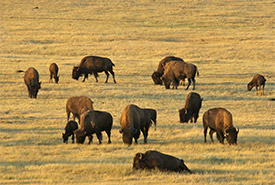
Plains bison, Old Man on His Back Prairie and Heritage Conservation Area, SK (Photo by NCC)
Witnessing the rapid loss of habitats and species at a global scale can bring on a feelings of both urgency, and helplessness. It can also be easy to think of it as someone else’s issue and that direct responsibility lies elsewhere.
Here in Canada, we have opportunities to protect and restore habitats that are important for Canadians, and important for the world. We have an opportunity to protect and restore our grasslands.
Watch Dan Kraus, weston conservation scientist at NCC, discuss the importance of conserving this precious ecosystem on CTV's morning show, Your Morning.
___________________
1Canada established four national parks in Saskatchewan and Alberta to recovery populations of pronghorn antelope and plains bison. With the recovery of these populations, these parks were delisted on July 17, 1947.
2In Saskatchewan alone there are almost 700,000 hectares of community pastures.


